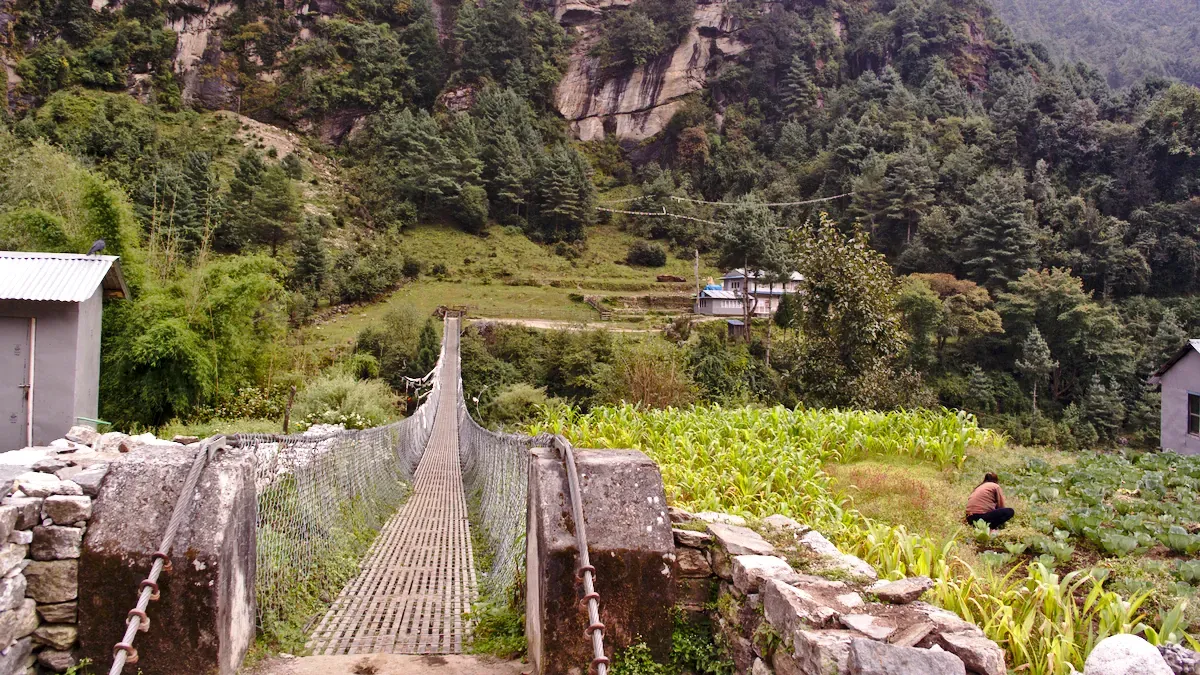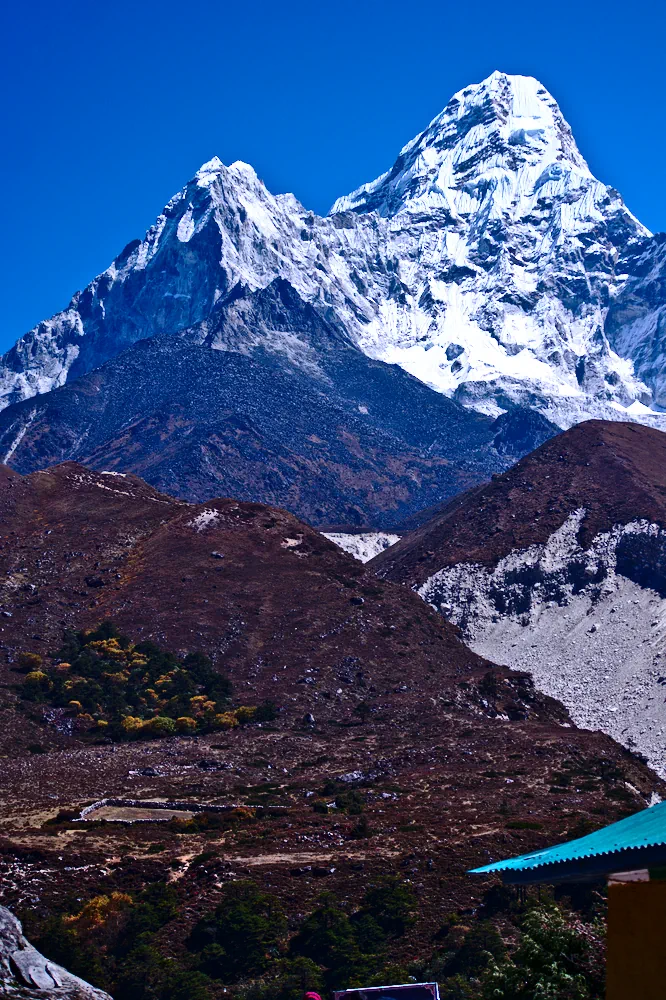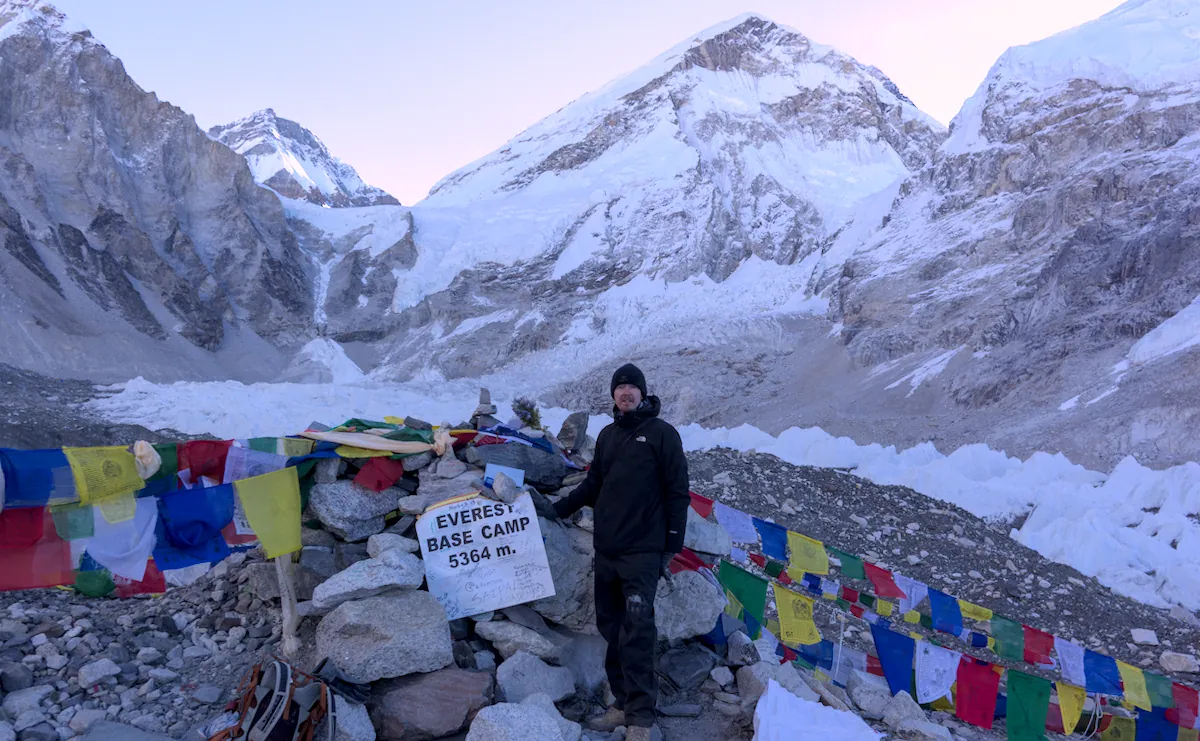The Himalayan morning air was unlike anything I’d experienced when I found myself sipping coffee in a traditional wooden Tibetan-style cabin in Lukla. The world was quiet, and mountains towered through the open window beside me. Occasionally, a muddy-cheeked boy would walk past chasing his puppy friend. In that moment of quiet serenity, I questioned the idea of starting anew—starting a new life, a new job, a new experience. I’d recently turned 30, and the idea of reinventing myself felt both thrilling and daunting.
Starting a new life doesn’t have to just be a daydream for you. If you really want it, you can make it happen. For me, it was a tangible goal that I pursued with remarkable, albeit slow, success.
The World Happiness Report shows us that young adults are strikingly less happy than their older counterparts: “In the United States and Canada, rankings for those aged 60 and older are 50 or more places higher than for those under 30.” The answer? Don’t stay on the track you’re on!
That Himalayan morning was in 2015. I had taken a month’s leave from work running a consultancy in Beijing and living a stressful corporate lifestyle that I never really wanted. A few years later, I was running my own business from my laptop at the other end of the Himalayas in India. But it all started there in Nepal, facing a two-week journey to Everest Base Camp.
Let’s explore how you, too, can embark on a transformative journey and start a new life.
Reflect on Your Journey So Far

My journals from that time in Nepal echo my desire to change my life, but I also took time to reflect on the path I had already taken. Life is always a continuation, from your past to today and into the future, so, like it or not, your starting point is where your past has delivered you. So take some time to consider how you got here. It’s the best starting point for where you want to go.
- What have you accomplished that you’re proud of?
- Which experiences have shaped your values and aspirations?
- Are there unfulfilled dreams that still ignite a spark within you?
Embrace the Art of Letting Go
Setting off from Lukla, the climb wasn’t particularly steep, but I was glad I had packed light. Two days before, while in Kathmandu, I had to decide what to take and what to leave in the hotel. I knew I had to take my camera—how often do you get to photograph Mount Everest? But what about everything else? Setting off on this adventure, I wanted my stuff—what if I needed those shorts? Or an extra pen and pad? The last major decision was whether I should take my laptop. I could write on the mountain and did I really trust the hotel to keep it for over two weeks?
I packed everything I could into my backpack, but when I picked it up, I knew I had to let it go. I emptied it right there on the hotel room floor, took a few items of clothing, my camera, and my journal, and set off to the airport.
You can’t start an adventure when you’re weighed down with stuff from your past. You have to let it go.
- What baggage are you carrying around that holds you back from the next chapter of your life? Can you let it go?
Define What a New Life Means to You

I don’t know if it was the altitude, the sense of being on the top of the planet, the deep blue skies, or the fresh mountain air that cleared my mind, but something helped me envision what a new life could look like. I wrote this in my journal:
“I need a life that would let me do this any time, not just when I ask my boss for vacation days.”
- Do you crave a career change that aligns with your passions?
- Is there a hobby or interest you’d like to pursue more seriously?
- What kind of environment or community do you want to be a part of?
You don’t need all the answers at this stage. You simply need to know that you want change and what direction that change should take you. Make a list of goals and add anything to that pulls you.
Build Meaningful Connections
On the trail, I sometimes ran into a group of travelers who were a day ahead of me. They might be taking a rest somewhere, allowing me to catch them up. We sat together, and they shared stories of their own life transitions, and I’d continue on with them for a section or two. After one grueling day, we’d been trekking for about seven hours and came to a steep climb with two more hours to get to the next rest point. I started to flag and struggled to continue. My legs were burning, and I was exhausted. A guy from their group noticed and hung back to accompany me—he talked to me, distracting me from the climb, and got me to the end point of Namche Bazaar.
Surrounding yourself with the different people is a surefire way to change your life. Supportive and inspiring people can be a catalyst for your own change and reason to maintain the the new choices you’ve made. Sometimes all it takes is to align yourself with the right people and let them lead you to a new lifestyle.
- Reconnect with friends who encourage your growth.
- Network with individuals in fields or activities you’re passionate about.
- Join groups or workshops that foster personal development.
Confront and Overcome Your Fears

I’d been on the mountain for over a week when I set off for the final push to Everest Base Camp. It was early, I was cold, and my head was throbbing from altitude sickness. As I walked out into the darkness with nothing more than a spotlight highlighting my feet, I felt elated. The anticipation was everything in that moment.
It was a long, slippy path, made harder by the massive earthquake just a few months earlier—the tourists hadn’t started coming back yet so the trails weren’t well-worn.
The stillness of the early morning darkness brought with it a sense of vulnerability, the same feeling that often accompanies major life changes. Acknowledge and continue on:
- What exactly are you afraid of—is it failure, judgment, or the unknown?
- Stepping out of your comfort zone is meant to be uncomfortable.
- Use your fears as motivation rather than obstacles.
Start a New Life with a Realistic Action Plan
Reaching base camp was unforgettable, but the journey back down the mountain gave me something even more valuable. I got stronger, more self-assured, and confident with every step down I took. If you’ve never experienced severe altitude sickness, you can’t imagine how good it feels to come down a mountain where every step gives you more oxygen to breathe than the last. After five days, I was back at Lukla, sitting next to the same open window but something had changed in me. I felt something pushing me forward to start a new life.
I wish I could tell you that a detailed step-by-step action plan came pouring out of me, and within a month, I had turned my life around. Unfortunately, it wasn’t that easy.
I did decide to start taking actions that eventually changed everything for me. I made a promise to myself to start writing, which eventually turned into Face Dragons. I started learning Tibetan, which took me to Tibetan regions in China and India. Turning thoughts into actions is crucial:
- Follow the steps to create a personal development plan.
- Use the principles of GTD to list out actionable tasks.
- Check your lists frequently and adjust your plan as needed.
Embrace the Journey Ahead

As I waited at Lukla airport for the clouds to clear so the plane could land, I knew that this wasn’t the end of my adventure. It was the start of a new life.
Meet Gregory, a writer and the brains behind Face Dragons. He's the go-to guy for getting things done.
Gregory's been living the digital nomad life in Asia for as long as anyone can remember, helping clients smash their goals. He writes on topics like software, personal knowledge management (PKM), and personal development. When he's not writing, you'll catch him at the local MMA gym, nose buried in a book, or just chilling with the family.







